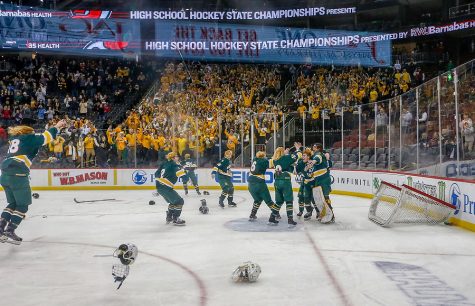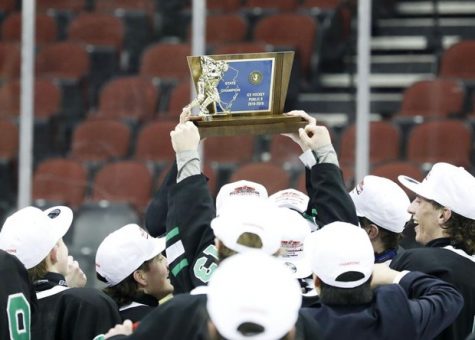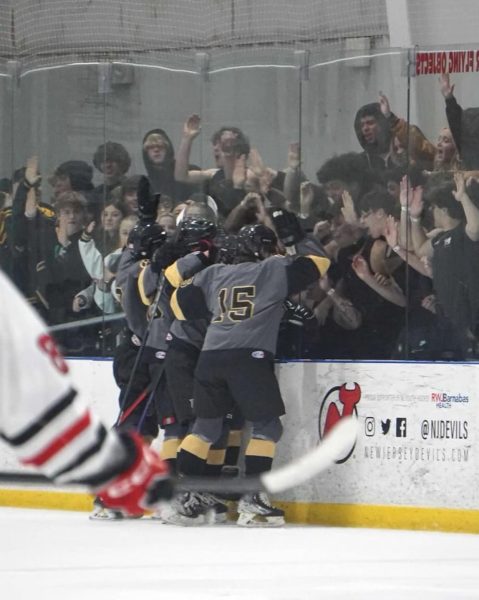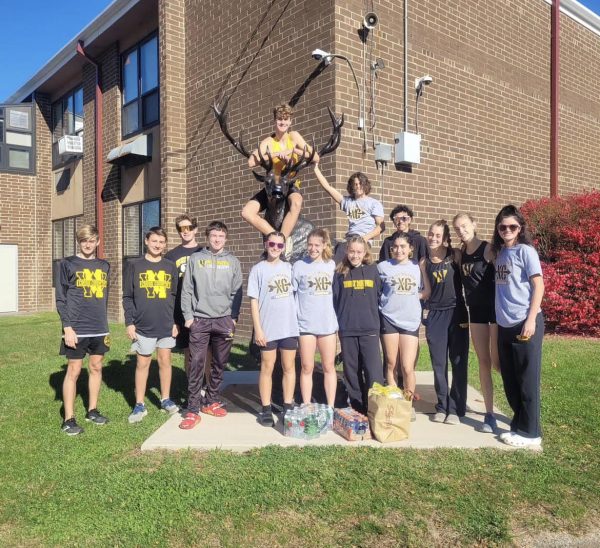Cold hard cash: Why wealth is a factor in the success of ice hockey teams


What does it take to win a championship? Some would say defense, others would say dedication, but at the end of the day, like everything else in the world, it all comes down to money. The ice hockey teams from wealthier towns in New Jersey will, in most cases, be the teams that have the most success or end up as the state champions. This is not to say that they are cheating, because that is not at all the case. However, towns that have more money will undoubtedly have more success when the final days of the season unravel, due to the multiple advantages these teams possess.
New Jersey has four different levels of championships: Public A, Public B, Public C, and Private. The different levels of championships are based on the size of the school, but every level has relatively equal talent throughout all the levels. Of course, in this case, private schools can not be included due to the fact that they offer scholarships to incoming high schoolers. If students are going to play hockey at private schools, there is a greater chance that those students are already advanced players who will definitely make the team. Plus, the money families pay in tuition gives private schools an advantage from the start.
Getting down to business, the public school state champions for 2018-2019 were Morris Knolls, Ridge, and Summit. The runner ups in the finals included Hillsborough, Randolph, and Chatham. Five of the six teams that made it to the finals were ranked in the top 100 wealthiest towns in New Jersey and three of those five were ranked in the top 25. Three of these teams have made their second appearance in the finals over the last two years. Summit, Randolph, and Chatham all had back-to-back years in the state finals. Summit pulled off two victories, along with Ridge, with two state championship victories in the last three seasons while both Randolph and Chatham fell just short.
What is the reason behind the success of these teams? It comes back to the money. Ice hockey is a very expensive sport. To begin, all the required equipment is needed in order to play alone could add up to around $1,000. It is also not necessarily the easiest sport to pick up or at which to be naturally gifted. A player needs to learn to skate, stick handle, shoot, pass, learn positioning on the ice, and the mental side of the game, along with everything else that is needed to play the sport. If these skills are not taught at a fairly young age, the kids are starting with an immediate disadvantage. Another advantage for kids from wealthier towns is their opportunity to play travel hockey from the time they are around eight years old. Playing for an organization not only costs a lot of money (average $2,500 per season), but is also very time consuming. Practices are typically twice a week, and usually two games on the weekend, which could be at any rink in the state. If parents are unable to take off work or don’t have the money or free time to get kids to the rink four times a week, the kids won’t be able to play. Hence, those students won’t have the same experience that kids in wealthier towns have had. And that is only youth hockey; the time commitment and expense does not stop there.
When it comes to high school hockey, wealth continues to factor into a team’s success. For the most part, this comes down to two reasons. One reason is that towns will typically have more kids who have been playing from the time they were young and have been able to develop their game skills. Generally speaking, these kids and their families have been able to pay for private lessons growing up, molding them into more fine-tuned players. The second reason is that that the towns with more money have more opportunities to practice. Ice slots at hockey rinks are expensive. The average cost for ice time is around $650 each practice. After two practices a week for around 14 weeks, along with a few extra practices here and there, there will be around 30 practices total. At the bare minimum this alone adds up to $19,500, which is without paying for buses, which vary by cost depending on how far the rink is from the school. For example, a bus ride from West Milford would take 35-40 minutes to get to the home rink in Wayne. Meanwhile, a team located in Wayne, it is different because they do not need a bus at all. Therefore, location can also play a factor on success as well. To practice twice a week alone is a lot of money, so the schools with limited funds won’t be able to get on the ice as often as teams that have the money to get more practices in, giving them an advantage as a team and helping the individual players as well.
It is undeniable that towns that are more prosperous than others have a better shot of having a successful season.
This trend will likely continue because nothing can be done to stop this from happening. There is no cheating, no manipulation– nothing that is illegal. The towns that have money will remain on top because they will always have more kids with more experience. The kids who could afford to spend money not only play on a travel team for nearly ten years, but are also able to add private lessons on top of that. This is just through childhood. When it comes to high school hockey, towns will have an advantage and will have an ability to pay for more ice time and be able to practice more than other teams. Teams like Summit, Chatham, and Randolph have proven all of this with consistently making long runs, or even better than that, by making it all the way to the state finals and winning championships.
Even though this is not always a guarantee, money is what gives a significant advantage in the world and the same has and will be seen in high school hockey. Look for the trend to continue for years to come.










